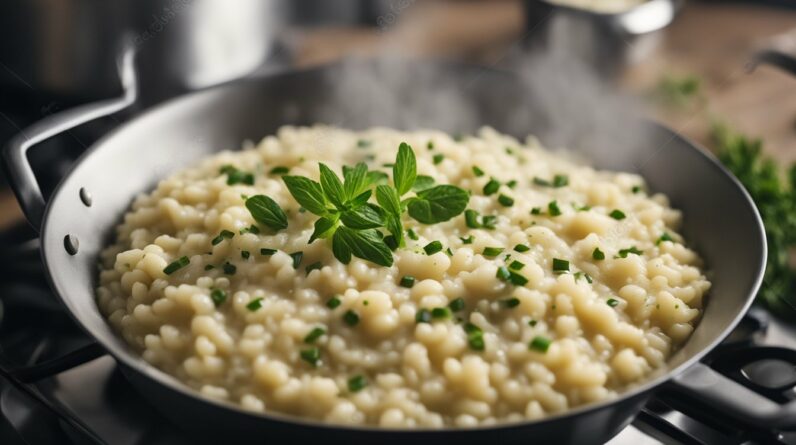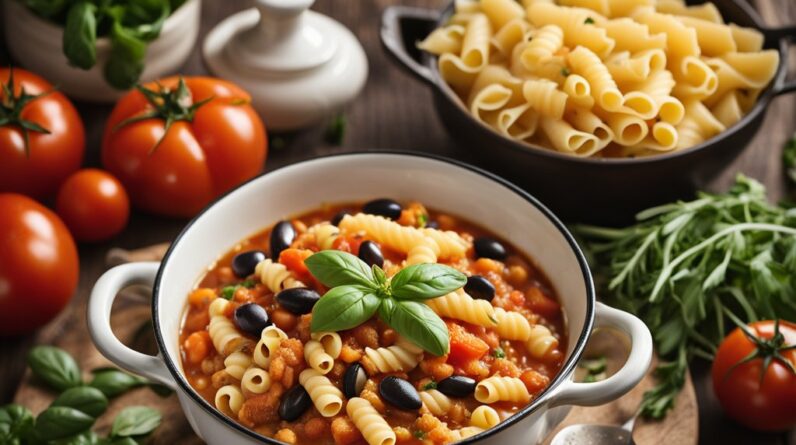In this article, we will guide you through the steps of creating a delicious and authentic traditional Bolognese sauce. Whether you’re a seasoned chef or a beginner in the kitchen, we’ve got you covered with simple yet delectable instructions to achieve the perfect flavor and texture. From selecting the right ingredients to mastering the slow-cooking process, we’ll share our secrets to help you impress your taste buds and wow your dinner guests with this classic Italian sauce. So, grab your apron and let’s get cooking!

Ingredients
To make a delicious traditional Bolognese sauce, you will need the following ingredients:
Ground Beef or Pork
The base of any Bolognese sauce is usually a combination of ground beef or pork. This adds richness and depth of flavor to the sauce.
Onion
Onions are an essential ingredient for adding sweetness and aroma to the sauce. Chop them finely to integrate their flavors into the dish.
Celery
Celery provides a subtle earthy flavor and adds a nice crunch to the sauce. Chop it into small pieces to ensure even cooking.
Carrot
The sweetness of carrots helps balance the acidity of the tomatoes and adds a hint of natural sweetness to the sauce. Finely dice the carrots for even distribution.
Garlic
Garlic is a must-have in any Italian sauce. Its pungent flavor enhances the overall taste and depth of the Bolognese sauce. Finely mince the garlic cloves for optimal flavor infusion.
Tomato Paste
Tomato paste is concentrated tomato puree that adds a depth of flavor and thickens the sauce. It gives the Bolognese sauce its rich red color.
Canned Tomatoes
Canned tomatoes bring acidity and sweetness to the sauce. Choose high-quality canned tomatoes to ensure a flavorful base for your Bolognese sauce.
Red Wine
Red wine adds complexity to the sauce and helps tenderize the meat. The alcohol will evaporate during the cooking process, leaving behind a rich and aromatic flavor.
Whole Milk
Whole milk adds creaminess and richness to the sauce, softening the flavors and balancing the acidity of the tomatoes.
Salt and Pepper
Season your Bolognese sauce with salt and pepper to taste, enhancing all the flavors in the dish. Be mindful not to oversalt, as the flavors will intensify as the sauce simmers.
Olive Oil
Use olive oil to sauté the vegetables and brown the meat. It adds a subtle fruity flavor and helps prevent sticking.
Preparing the Meat
Before we begin the cooking process, we need to prepare the meat properly.
Sautéing the Meat
In a large pot or Dutch oven, heat some olive oil over medium heat. Add the ground beef or pork and break it up using a wooden spoon or spatula. Sauté the meat until it becomes browned and no longer pink.
Cooking until Browned
Allow the meat to cook until it is nicely browned. This step is crucial for developing deep flavors in the sauce.
Draining the Fat
Once the meat is fully cooked, carefully tilt the pot and use a spoon to remove any excess fat or oil that has accumulated. This step helps reduce the overall fat content in the sauce and makes it healthier.

Sautéing the Vegetables
Now that the meat is ready, it’s time to sauté the vegetables to create a flavorful base for the Bolognese sauce.
Chopping the Onion, Celery, and Carrot
Finely chop the onion, celery, and carrot, ensuring they are similar in size. This consistency allows the vegetables to cook evenly and blend well with the sauce.
Heating Olive Oil
In the same pot used for sautéing the meat, heat some more olive oil over medium heat.
Adding the Vegetables
Add the chopped onion, celery, and carrot to the pot and sauté them until they become softened. The heat will release their flavors and create a wonderful aroma in your kitchen.
Cooking until Softened
Continue cooking the vegetables until they are softened, but be careful not to overcook them. The goal is to achieve a balance between tenderness and retaining some of their natural texture.
Adding Garlic
Once the vegetables are softened, add the minced garlic to the pot and cook for an additional minute. Garlic has a tendency to burn quickly, so make sure you stir it constantly to avoid any unpleasant flavors.
Cooking for a Minute
Cooking the garlic for just a minute allows its flavors to meld with the rest of the vegetables and infuse the sauce with a delightful garlicky aroma.
Building the Sauce
With the sautéed vegetables and meat ready, it’s time to build the base of the Bolognese sauce.
Adding Tomato Paste
Add the tomato paste to the pot and cook it for a few minutes. This step helps to enhance the sweetness and depth of flavor in the sauce.
Cooking for a Few Minutes
Cooking the tomato paste for a few minutes helps caramelize it slightly, intensifying its taste and adding richness to the sauce.
Adding Ground Meat
Add the sautéed ground meat to the pot, combining it with the tomato paste and vegetables. Stir everything together to incorporate all the flavors.
Breaking it up and Mixing
Use a wooden spoon or spatula to break up any chunks of meat and mix it with the rest of the ingredients in the pot. This step ensures that the meat is evenly distributed and clumps are broken up.
Cooking until Browned
Continue cooking the mixture until the meat is fully browned. This adds a depth of flavor and richness to the sauce.
Pouring in Red Wine
Pour in the red wine and stir well to combine. The wine will deglaze the pot, picking up any flavorful bits stuck to the bottom, and infuse the sauce with its complex flavors.
Simmering to Evaporate the Alcohol
Simmer the sauce for a few minutes to allow the alcohol from the wine to evaporate. This helps mellow the flavors and ensures that the finished sauce is not overpoweringly alcoholic.
Adding Canned Tomatoes
Add the canned tomatoes to the pot, breaking them up with a spoon or spatula. Stir well to incorporate them into the sauce.
Stirring Well
Make sure to stir the sauce thoroughly to evenly distribute the tomatoes and ensure a consistent flavor throughout.
Seasoning with Salt and Pepper
Now it’s time to season the sauce with salt and pepper to taste. Be mindful of the salt content, as it can be adjusted later if needed.

Simmering the Sauce
Simmering the Bolognese sauce is key to developing its rich and complex flavors.
Lowering the Heat
Once the sauce is seasoned, lower the heat to a gentle simmer. This will prevent it from scorching and allow the flavors to meld together slowly.
Covering the Pot
Cover the pot partially to retain the moisture and allow the sauce to reduce gradually. This step helps intensify the flavors and achieve a thicker consistency.
Simmering for Several Hours
Let the sauce simmer for several hours to fully develop its flavors. This slow-cooking method ensures that the meat is tender and the sauce becomes rich and aromatic. Be sure to check on the sauce occasionally and give it a gentle stir to prevent sticking.
Stirring Occasionally
While the sauce is simmering, give it a little stir from time to time to prevent it from sticking to the bottom of the pot. This will also help distribute the flavors evenly throughout the sauce.
Adding the Milk
Adding milk to the Bolognese sauce brings a creamy richness and balances the acidity of the tomatoes.
Pouring in Whole Milk
Pour in the whole milk, stirring gently to incorporate it into the sauce. The milk will add a delightful smoothness to the finished Bolognese sauce.
Simmering for Another Hour
Allow the sauce to simmer for an additional hour after adding the milk. This allows the milk to infuse with all the other ingredients and create a lusciously creamy sauce.
Stirring Occasionally
While the sauce continues to simmer, stir it occasionally to ensure that the milk is incorporated evenly and doesn’t stick to the bottom of the pot.

Adjusting the Consistency
Depending on your preference, you may want to adjust the consistency of the Bolognese sauce.
Using a Wooden Spoon
Use a wooden spoon or spatula to break up any large chunks of meat or vegetables that remain in the sauce. This step helps create a smoother texture.
Simmering for Additional Time
If you find that the sauce is too thin, continue simmering it for a bit longer to allow it to reduce and thicken naturally. Be patient, as the flavors will continue to develop during this time.
Adding Water or Stock, if needed
If the sauce becomes too thick, you can add a little water or stock to thin it out to your desired consistency. Add it gradually and stir well to incorporate.
Cooking until Desired Thickness
Simmer the sauce until it reaches your desired thickness. Keep in mind that as the sauce cools, it will thicken further, so aim for a slightly looser consistency during cooking.
Serving the Bolognese Sauce
After hours of simmering, it’s finally time to enjoy your homemade Bolognese sauce.
Cooking Pasta
While the sauce is simmering, cook your favorite pasta according to the package instructions. Choose a pasta shape that will cling well to the sauce, like tagliatelle or pappardelle.
Draining the Pasta
Once the pasta is cooked al dente, drain it in a colander to remove excess water. Rinse it with a little cold water to stop the cooking process and prevent it from sticking together.
Plating the Pasta
Divide the cooked pasta among individual plates. Use tongs or a pasta server to create a bed of pasta on each plate, ready to be smothered in the rich Bolognese sauce.
Pouring Bolognese Sauce over Pasta
Generously ladle the Bolognese sauce over the pasta, making sure to distribute it evenly. The sauce should coat the pasta nicely, creating a luscious and flavorful dish.
Garnishing with Parmesan Cheese
Finish off your Bolognese pasta by grating some Parmesan cheese over each serving. The nutty and salty flavors of the cheese complement the richness of the sauce.
Enjoying!
Gather around the table with family and friends and dig into your homemade Bolognese pasta. The combination of tender meat, aromatic vegetables, and creamy tomato sauce will make for a truly satisfying meal. Savor each bite and enjoy the fruits of your labor!

Storage and Reheating
If you have leftovers or want to make a larger batch of Bolognese sauce for later use, here’s how to store and reheat it.
Allowing the Sauce to Cool
Before storing the sauce, allow it to cool completely. Let it sit at room temperature for about an hour to reduce the heat before transferring it to containers.
Storing in Airtight Containers
Transfer the cooled Bolognese sauce into airtight containers or freezer-safe bags. Divide it into portions that suit your needs, ensuring that the containers are filled leaving some headspace for expansion.
Refrigerating for Up to 3 Days
If you plan to use the sauce within a few days, store it in the refrigerator. Bolognese sauce can be safely refrigerated for up to three days.
Freezing for Up to 3 Months
For longer storage, place the sauce in the freezer. Bolognese sauce can be kept in the freezer for up to three months. Be sure to label the containers with the date to keep track of its freshness.
Reheating on Stove or Microwave
To reheat the Bolognese sauce, simply thaw it in the refrigerator overnight if frozen. Then, warm it gently on the stove over low heat or in the microwave, stirring occasionally to ensure even heating.
Conclusion
A traditional Bolognese sauce is a labor of love that rewards you with a rich, meaty, and flavorful dish. By following this comprehensive recipe, you can create your own mouthwatering sauce that will elevate any pasta dish to new heights.
Remember to adjust the recipe to suit your taste preferences, adding extra herbs or spices if desired. With time, practice, and a few tweaks to the recipe, you’ll have the perfect Bolognese sauce recipe that will become a family favorite for generations to come. So gather your ingredients, roll up your sleeves, and enjoy the process of creating this classic Italian masterpiece in your own kitchen. Buon appetito!









